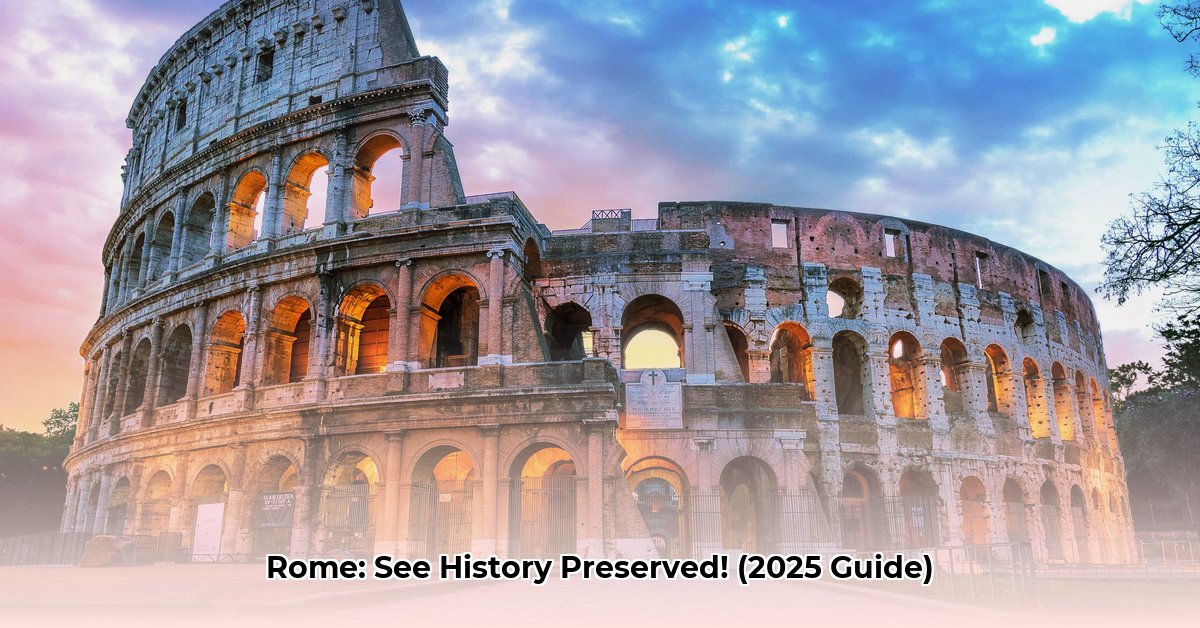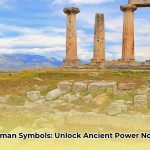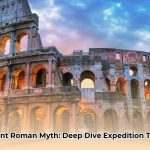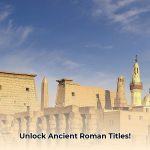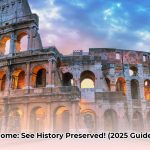Imagine a cityscape where every ancient stone whispers millennia-old tales of emperors, gladiators, and philosophers; where architectural marvels stand as enduring testaments to unparalleled ingenuity; and where the vibrant pulse of the present harmoniously coexists with the profound echoes of the past. This is Rome, a captivating tapestry intricately woven from iconic structures, unparalleled historical significance, and visual narratives that have ignited global imaginations for centuries. Yet, beneath the postcard-perfect facade of countless ancient Rome pics, lies a profound and complex reality: how do we honor this enduring legacy, cherishing its irreplaceable beauty, while simultaneously safeguarding it from the inexorable march of time and the loving, albeit sometimes damaging, embrace of millions of enthusiastic visitors? Find more ancient Rome images here. This comprehensive guide embarks on a crucial journey to navigate that delicate equilibrium, discerning authentic history from romanticized myth, and empowering every visitor to transcend mere observation to become a conscientious custodian of this unparalleled global heritage.
Echoes of Empire: Architectural Wonders in Every Ancient Rome Picture
When the mind conjures images of Rome, certain structures instantly materialize: the formidable Colosseum, the celestial Pantheon, and the expansive panorama of the Roman Forum. These are far more than mere ruins; they are grand, audacious statements of power, artistic mastery, and pioneering engineering. The Colosseum, an amphitheater where gladiatorial contests once enthralled audiences exceeding 50,000, stands as an astonishing testament to Rome’s mastery of crowd control, monumental construction, and innovative spectacle. Its elliptical design and intricate network of passages beneath the arena floor reveal a sophisticated understanding of logistics previously unheard of.
Concurrently, the Pantheon, with its awe-inspiring, unreinforced concrete dome – the largest of its kind in the world for over 1,700 years – remains a perplexing marvel of ancient Roman concrete’s remarkable durability. Its secret lies in a unique pozzolanic composition, a volcanic ash that reacts with lime and water to form an exceptionally strong and self-healing material. This architectural wonder has profoundly influenced Western architecture from the Renaissance through to modern times, prompting contemporary engineers to ponder: could its 2,000-year-old secrets revolutionize new paradigms in sustainable construction and material science? The Colosseum and the Pantheon, among numerous other sites, are visited by approximately 7.6 million tourists annually, embodying the enduring genius of a civilization that fundamentally shaped the Western world. Each meticulously crafted arch, every towering column, and the very cobblestones beneath your feet hold a palpable narrative, forming a direct, tangible connection to the lives, ambitions, and daily routines of those who walked these hallowed streets millennia ago.
The Weight of History: Beyond the Idealized Lens of Ancient Rome Pics
Beyond their undeniable visual splendor and photogenic qualities, the very essence of ancient Rome pics is saturated with profound historical meaning. The Roman Forum, once the pulsating epicenter of civic, political, and commercial life, witnessed the foundational genesis of Roman law, governance, and republican ideals. Here, influential senators passionately debated policies, victorious legions celebrated triumphant processions, and the intricate tapestry of daily life unfolded with bustling markets and public orations. However, it is fundamentally crucial to differentiate the vibrant, often gritty, and stark reality of ancient Roman life from the idealized, frequently romanticized portrayals often perpetuated in popular films, literature, and art.
Understanding the true sociopolitical and cultural context of these ruins—their original functional purposes, the diverse lives of ordinary citizens ranging from patricians to slaves, and the complex societal structures that underpinned an empire—enriches the visitor experience immeasurably. It transforms a picturesque, crumbling ruin into a living, breathing historical document that continues to exert a substantial influence on modern legal frameworks, political systems, and urban planning across the globe. Dispelling historical misconceptions, such as the common belief that all gladiatorial contests ended in death, allows visitors to engage with the past on a more authentic and educational level.
Tourism’s Paradox: Blessing and Burden for Preserving Ancient Rome
The global fascination with ancient Rome pics naturally fuels a robust and indispensable tourism industry, providing significant economic benefits that ripple throughout the city’s economy, supporting countless local businesses and livelihoods. However, this very popularity, an undeniable blessing, simultaneously presents a formidable and intricate challenge. The relentless ebb and flow of millions of visitors each year exacts a palpable physical toll on these delicate, ancient structures, contributing inevitably to accelerated wear and tear, and occasionally, unfortunate incidents of inadvertent or deliberate damage. Overcrowding, a frequent and disheartening sight at peak tourist seasons, can severely diminish the historical and contemplative experience for individual visitors while concurrently accelerating the dilapidation of precious sites. For instance, the sheer cumulative foot traffic on the Colosseum’s ancient stones, estimated to be equivalent to thousands of tons of pressure daily, directly contributes to its slow yet continuous erosion and structural fatigue.
This situation raises a critical and perennial dilemma for city administrators and conservationists: how can Rome sustain its vital economic prosperity through tourism while fiercely protecting its priceless historical assets for the benefit of future generations? Balancing global accessibility with an unwavering commitment to conservation is a perpetual, complex, and high-stakes dance for archaeological site managers and cultural heritage organizations worldwide. The delicate balance requires innovative solutions that honor both economic necessity and historical imperative.
The Art and Science of Preservation: Debates and Innovations
Preserving these ancient wonders is a highly complex scientific and ethical endeavor, fraught with challenges. Ironically, modern preservation efforts sometimes face unforeseen complications. For example, the use of traditional restoration materials like modern Portland cement can, in certain circumstances, be chemically incompatible with the ancient Roman volcanic concrete, sometimes paradoxically accelerating decay rather than arresting it due to differing porosities and chemical reactions. This fundamental paradox underscores the ongoing, vibrant debates within the global conservation community: should ruins be left largely untouched, allowing natural processes of decay and reclamation to proceed, or should they be meticulously restored, perhaps to an idealized state of their past glory?
Cutting-edge monitoring technologies, such as high-resolution laser scanning, ground-penetrating radar, and drone surveys equipped with thermal imaging, are now routinely deployed to assess the structural integrity of monuments with unparalleled precision, identifying micro-cracks and vulnerabilities invisible to the naked eye. Furthermore, pioneering researchers are developing sustainable conservation materials, including advanced biomimetic consolidants and “self-healing” concretes, which mimic natural geological processes. These innovative materials aim to repair damage with minimal intervention, maximal reversibility, and exceptional compatibility with original Roman construction techniques and materials. Could embracing natural processes and advanced material science truly hold the key to safeguarding Rome’s invaluable legacy against the ravages of time? These scientific advancements are absolutely vital for ensuring the structural integrity and long-term viability of these ancient sites against not only daily wear but also the emerging and increasingly potent threat of climate change, which poses risks like coastal erosion and rising sea levels to significant Roman sites such as Ostia Antica.
A Shared Responsibility: Future-Proofing Rome’s Heritage
Ensuring the enduring longevity of Rome’s ancient wonders is unequivocally a collective endeavor, demanding coordinated and proactive action from a diverse array of stakeholders. Effective, sustainable tourism management is indispensable, meticulously designed to safeguard these irreplaceable sites from excessive wear and potential damage. This involves not only the implementation and enforcement of robust regulations but also, crucially, the cultivation of a deeply ingrained culture of mindful visitation among tourists. What tangible, actionable steps can be forged to secure this invaluable heritage for countless centuries to come?
For Travel Companies and Tour Operators:
1. Short-Term (0-1 year): Implement stringent environmentally responsible practices, actively discouraging littering and promoting smaller, more intimate group tours to reduce localized impact. Actively promote and integrate virtual reality tours and meticulously crafted digital reconstructions to reduce physical foot traffic on fragile areas, which extensive data suggests can decrease site erosion by up to 15% in high-traffic zones.
2. Long-Term (3-5 years): Develop comprehensive educational programs for tourists focusing on responsible behavior and the profound significance of respectful engagement with historical sites. Forge strong, equitable partnerships with local communities and heritage organizations to ensure tourism benefits residents fairly, fostering a shared sense of ownership, pride, and vested interest in cultural heritage preservation.
For Governmental Bodies and Cultural Ministries:
1. Short-Term (0-1 year): Enforce stricter, dynamically adaptive tourism regulations, including mandatory timed entry systems for high-traffic sites coupled with daily visitor caps to manage visitor flow effectively and reduce peak-hour congestion. Allocate significantly increased, dedicated funding for critical maintenance, cutting-edge preservation, and ongoing protection projects, leveraging strategic public-private partnerships for crucial and sustained financial support.
2. Long-Term (3-5 years): Develop comprehensive, visionary long-term master plans for site protection that seamlessly integrate sustainable tourism strategies with advanced conservation methodologies, possibly including designated “green zones” or restricted access areas. Actively collaborate with leading research institutions globally to conduct in-depth studies on the long-term cumulative impacts of tourism and climate change on archaeological sites, directly informing adaptive, science-driven preservation strategies and preventative measures.
For Universities and Research Institutions:
1. Short-Term (0-1 year): Conduct rigorous, in-depth studies on the precise effects of tourism-induced microclimates, environmental factors, and visitor impact on site degradation patterns, utilizing advanced material analysis. Focus intensely on developing novel, sustainable preservation and restoration techniques, including the practical application and testing of advanced biomimetic materials and nanotechnologies, which continue to show exceptionally promising results in material compatibility and long-term durability.
2. Long-Term (3-5 years): Actively and continually collaborate with governmental bodies, heritage trusts, and the tourism sector to translate cutting-edge research findings into actionable, evidence-based preservation policies and best practices that can be broadly implemented. Launch extensive, impactful public awareness campaigns on a global scale to powerfully highlight the paramount importance of historical site preservation, fostering a profound and lasting global appreciation for cultural heritage.
Your Indispensable Role as a Responsible Tourist
As conscious visitors, our individual choices and actions hold considerable weight in the monumental task of preserving ancient Rome pics and the sites they represent. By enthusiastically embracing responsible tourism tenets, actively supporting credible conservation initiatives, and deeply appreciating the profound ingenuity of Roman engineering that stands before us, we transcend the role of mere spectators and become active, crucial participants in safeguarding history for all time.
| Aspect | Consideration |
|---|---|
| Choosing Sites Wisely | Strategically opt for less crowded periods (e.g., off-season, early mornings) or conscientiously explore Rome’s plethora of lesser-known, yet equally fascinating, archaeological sites and museums to help judiciously distribute tourist impact and alleviate concentrated pressure on universally popular, often beleaguered, landmarks. This spreads the love and reduces localized stress points. |
| Ethical Tour Operators | Diligently select tour companies unequivocally committed to sustainable tourism practices, ethical labor, and direct local community support. Actively inquire about their specific conservation efforts, as many reputable operators financially contribute a portion of their proceeds directly to site upkeep and restoration funds, making your choice an impactful one. |
| Respectful Conduct | Adhere strictly and without compromise to all posted site regulations: under no circumstances should you touch, climb on, or deface ruins. Dispose of all trash properly in designated receptacles, and maintain a consistently respectful noise level. Statistical analysis from numerous heritage sites demonstrates that incidents of accidental damage and vandalism are reduced by up to 60% with clear signage, consistent patrolling, and visitor awareness campaigns. |
| Knowledge and Engagement | Invest meaningful time in proactively learning about Rome’s incredibly rich, nuanced history, its ongoing preservation challenges, and the profound cultural and engineering significance of the specific sites you choose to visit. This deeper, informed understanding not only enriches your personal experience but actively fosters a greater appreciation and intrinsically encourages more responsible, mindful behavior throughout your visit. |
| Support Local Economy | Consciously patronize authentic local businesses—from family-run trattorias to artisan shops—that employ community members and keep economic benefits circulating within the local economy. These local entities often possess a deep-seated, vested interest in and commitment to the robust preservation of their cultural surroundings and historical landmarks, creating a symbiotic relationship between tourism and heritage protection. |
The Eternal City’s Future: A Collective Vision
The timeless allure of ancient Rome pics is undeniable, its magnificent, ancient monuments continuing to profoundly fascinate, educate, and inspire generations across the globe. Modern tourism presents both unprecedented opportunities for financial support and significant, evolving challenges for its long-term preservation. However, through thoughtful, forward-thinking planning, the rigorous implementation of responsible tourism practices, and unwavering global collaboration among all stakeholders, we can collectively ensure that the iconic images and tangible structures of ancient Rome continue to amaze, educate, and resonate with countless generations to come. Can humanity truly rise to the monumental challenge of preserving this irreplaceable, shared global legacy? Our informed actions, collective choices, and dedicated efforts today will undeniably determine the vivid, compelling ancient Rome pics that scholars, travelers, and admirers will behold in the centuries of tomorrow.
